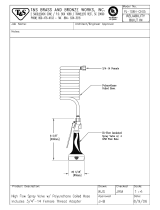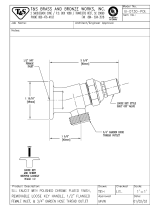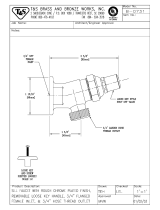Hot Spray Procedure
CAUTION: Metal burn hazard
Use of burner will make spray gun hot. Avoid touching
wand. Serious burns from hot metal could occur if
touched.
• Before starting burner, make sure vicinity is free of
flammable vapors, dust, gases, or other potentially
combustible materials. Operate only where open
flame or torch is permitted and neither flammable
vapors nor combustible objects are present.
• Ensure there is fuel in burner fuel tank.
• Turn Heat Switch ON and adjust Thermostat to
desired temperature. (For steam spraying, set
temperature at 212°F or higher and use YELLOW
nozzle.)
• Burner will only fire as trigger is squeezed – follow
instructions for spraying.
• Wait before re-lighting burner. NEVER attempt to
immediately re-light the burner if it doesn’t ignite the
first time. Unburned oil or gas may have
accumulated, causing potential explosion or fire
hazard.
• Burner automatically turns off when trigger is
released or when temperature setting is reached.
Note: If burner exhaust is white, adjust burner for
peak performance. See “Oil Burner Adjustment”
section towards the back of this manual.
DANGER: Carbon monoxide poisoning
hazard
Exhaust fumes from the burner contain carbon
monoxide (CO), a poisonous gas you cannot see,
smell, or taste. The CO generated by the pressure
washer can rapidly accumulate, even in areas that
appear to be well ventilated, resulting in dangerous and
fatal concentrations within minutes. ONLY run pressure
washer outdoors and away from air intakes. NEVER run
pressure washer inside any enclosed or semi-enclosed
spaces, including homes, garages, basements, sheds,
boxes, pick-up truck beds, RVs, or boats. These spaces
can trap poisonous gases, EVEN if you run a fan or
open windows.
Step 4. Stopping
If the burner was used, turn Heat Switch OFF and run
cold water through the coil for at least 2 minutes while
spraying. If no heater, you may immediately:
• Turn power switch OFF.
• Turn water supply OFF.
• Actuate spray gun trigger to relieve system
pressure.
• Remove garden hose, pressure hose and nozzle.
• Unplug pressure washer.
• Let machine cool for 5 minutes and store in a
clean, dry area until next use. See “Storage”
section for more details.
• If storing for more than 30 days, see “Long Term
Storage.”
Storage
Between-Use Storage
Before storing, let machine cool for at least 5 minutes,
as a hot engine can be a fire hazard. When machine is
not in use, remove key from starter (electric start
engines), or remove spark plug. Place in a secure
location where it will not be started by untrained
persons.
An appropriate storage location is:
• Clean and dry.
• Away from sources of heat, open flames, sparks
or pilot lights, even if the machine’s engine and
burner fuel tanks are empty. (Residual fuel vapors
from tank can ignite.)
• Away from extreme high or low temperatures.
(Do not store the unit in freezing conditions
unless it is prepared as directed in “Winter
Storage Preparation.”)
Long-Term Storage Preparation (between
infrequent uses and at end of season)
Prepare the engine for long-term storage if you will not
be using machine again for more than 30 days. Fuel
can become stale when stored over 30 days. Stale fuel
causes acid and gum deposits to form in the fuel system
which can cause the engine to malfunction. To avoid
engine problems, the fuel system should be emptied or
treated with a fuel preserver before storing the machine
longer than 30 days.
1. Prepare Fuel System (engine) for Storage:
• Drain all gasoline/fuel from the tank and
carburetor. The final fuel in the carburetor can
be drained by operating the pressure washer
and sprayer until the engine stops from lack of
fuel.
OR:
• Add fuel stabilizer to the gasoline/fuel
(following manufacturer’s instructions).
Fuel stabilizer steps:
a. Ensure gas tank is full.
b. Add fuel stabilizer to fuel tank.























